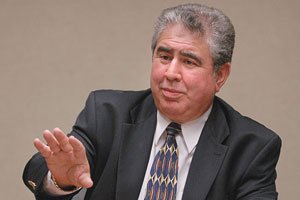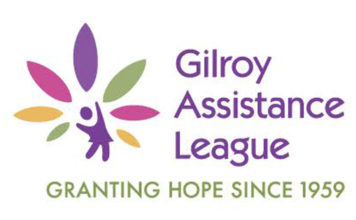Council relations, regional partnerships and the future of
Gilroy Gardens were just a few of the issues discussed during the
first day of the Gilroy City Council’s goal-setting session. The
marathon retreat lasted from 9 a.m. until 5 p.m. Friday, with more
items slated to be discussed Saturday morning.
Council relations, regional partnerships and the future of Gilroy Gardens were just a few of the issues discussed during the first day of the Gilroy City Council’s goal-setting session. The marathon retreat lasted from 9 a.m. until 5 p.m. Friday, with more items slated to be discussed Saturday morning.
How is the council perceived?
Council members kicked off Friday morning talking about council relations. Mayor Al Pinheiro expressed concern about a Community Pulse that appeared on the Dispatch’s opinion page, indicating that most community members who were polled did not trust the City Council. He indicated that he agreed with some of the comments that people made. Other council members’ opinions varied widely on the subject.
Both councilmen Bob Dillon and Peter Arellano said the council needed to develop a thicker skin in general. Dillon disputed some people’s statements that the council is dysfunctional.
“Of course, we’re going to make people unhappy – we’re messing with their income,” Dillon said, noting current budget challenges. “That doesn’t mean we’re dysfunctional.”
On the other hand, Councilwoman Cat Tucker and Pinheiro expressed concern about community perception of the council.
Tucker said some friends of hers watch the council sessions on television and point out council members who they believe are being openly vindictive and attacking one another.
Councilman Dion Bracco said he believed there were problems with relations on the council but that nothing could be done to resolve them. He added that he did not hold much stock in the Community Pulse, noting that the comments were somewhat anonymous because it is unclear what specific community members are saying.
“I don’t think we should be trying to please those 12 people,” he said.
Still, Pinheiro maintained that council relations need to improve.
“I don’t look for us to have a buddy-buddy system, but that doesn’t mean that we should be pointing fingers at other council members,” he said.
He specifically mentioned Councilman Perry Woodward’s comments in a recent Dispatch article, in which Woodward said he believed a mayor’s roundtable – held in September – was politically motivated.
“I’m using this as an example because I think there’s not enough of that picking up the phone and saying, ‘Look, I’m concerned about this,'” Pinheiro said.
Woodward countered that he had talked to Pinheiro about the issue, although Pinheiro said that discussion occurred after roundtable already had occurred. Council members debated whether it was appropriate to criticize the actions of fellow council members when talking with the media, and whether council members should have the freedom to speak their minds.
The discussion about council relations branched off into a discussion about the mayor’s powers, as Woodward said he did not think it was appropriate for the mayor to convene city staff without a vote of the entire council. He specifically cited a portion of the city charter that stated, “The Mayor possesses only such authority over the city administrator and the administrative branch as he possesses as one member of the council.”
“I didn’t think for a minute I was going to show up and have all of the top brass there,” Woodward said of the mayor’s roundtable.
However, City Attorney Linda Callon said she believed the mayor had broader powers when looking at the entirety of the charter.
Council members were divided on the issue, with Bracco saying he believed the mayor needed some power, while Councilman Peter Arellano questioned whether mayoral powers should be limited, although he made it clear he was talking about the mayoral position and not about Pinheiro himself.
While Pinheiro said it seemed there should be some way of distinguishing the mayoral position from that of other council members, he said he mostly wanted clarity on the issue “so that I’m not feeling like I’m walking on coals.”
Ultimately, the council decided with a thumbs-down vote not to discuss the issue further.
Sewers and water rates to rise
The council also discussed a 3.75-million gallon expansion of the South County Regional Wastewater Authority facility that Gilroy shares with the City of Morgan Hill. The nearly $100 million project will require rate increases, and the city plans to complete a rate study by the end of the year, City Administrator Tom Haglund said. The project will include plant expansion, construction of new influent pump stations, a pipleine to the Pajaro River and an ultraviolet apparatus that treats water going to the river. The city will need to issue bonds for the project, Haglud said. The City of Gilroy will be responsible for about 58 percent of the cost, while Morgan Hill will need to pay for the remainder. The plant expansion is slated to take place in 2013-14, and construction will take at least two years, city engineer Rick Smelser said.
Arellano asked about the possibility of creating energy from methane produced by the treatment plant as other cities have done. Smelser said it is cheaper to transport solid waste to a landfill at this time, but that may be something that the city would want to consider in two or three decades.
Team up for fire and SWAT?
Council members learned about other regional partnership opportunities as well, such as the Gilroy Fire Department joining with the South Santa Clara County Fire District to form a regional fire service. There are numerous issues that still need to be investigated, such as how such a fire service would be governed and financed, before considering such a move, Haglund and Fire Chief Dale Foster said.
Tucker wanted to ensure the City of Gilroy would receive at least the same level of service it receives today if such a deal were reached.
The cities of Gilroy and Morgan Hill are also teaming up for police SWAT services, and they are joining together as a regional force to express their desires regarding the California High-Speed Rail project.
Pinheiro said the partnerships between the two cities is a good sign.
“We understand that we each have bills to pay,” he said, “but beyond all of that, there is a common goal, and that is to serve South County the best that we all can.”
At the same time, Tucker said there should some limits when it comes to partnerships regarding economic development and attracting business into the city.
“The bottom line is we’re going to protect Gilroy for Gilroyans,” Tucker said.
What to do with the Gardens
Council members spent a large amount of time talking about Gilroy Gardens, the 536-acre amusement park that the City of Gilroy acquired for $13.2 million in March 2008.
Although the park was financially struggling when the city bought it and is just breaking even now, Haglund said Gilroy Gardens has a much broader economic impact. He noted that the park attracts 350,000 visitors annually, and has a $4.2 million annual payroll, which includes 1,200 unskilled youth jobs. The city has the option of either maintaining the park, closing it, converting it to a passive park with no amusement park rides, or trying to sell it, Haglund said.
He noted that even closing the park would cost $400,000 per year when considering the costs of security and maintenance. He estimated it would cost $1 million to turn Gilroy Gardens into a “passive park” and $600,000 annually to maintain it. As a result he said maintaining the status quo would have the least economic impact on the city at this point.
Dillon said he felt the city is subsidizing the park, as it is leasing it for only $450 per year after purchasing it for $13.2 million, and he wondered if the city could receive at least $1 for each car that parks there. However, other council members said the economic benefits to the community outweigh the drawbacks.
Woodward gave kudos to the Gilroy Gardens board, noting that many people questioned at first whether the park would shut down.
“I’m not inclined to stop now,” he said.
Councilman Craig Gartman recommended coming up with a master plan for the area, noting that there has been past discussion about a potential RV park, hotel and shopping center.
Haglund recommended that the city come up with some kind of long-term vision for the park, and the council decided to develop an action plan for the park down the road and to have a council visit to the theme park followed by a study session.
“It can’t stay forever, and one day it will be worn out, so we need to start planning now,” Bracco said.














